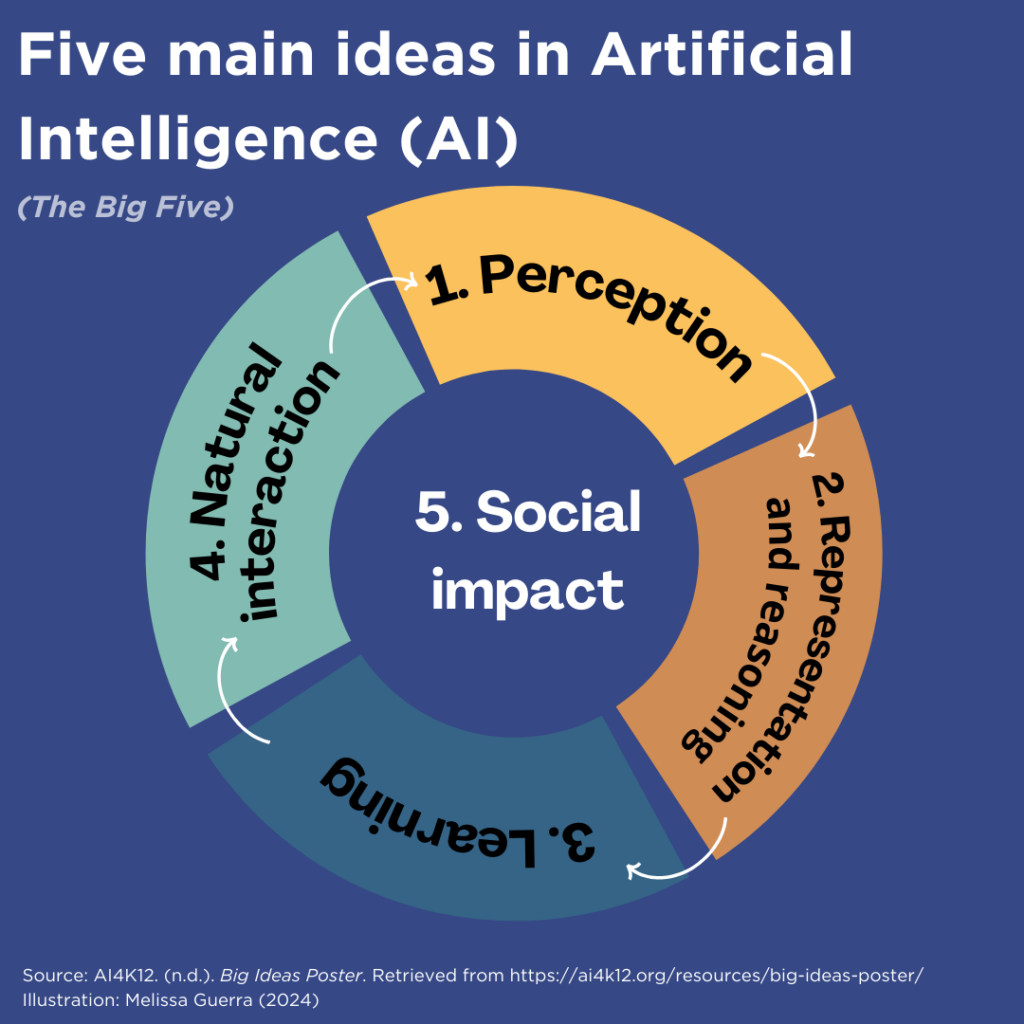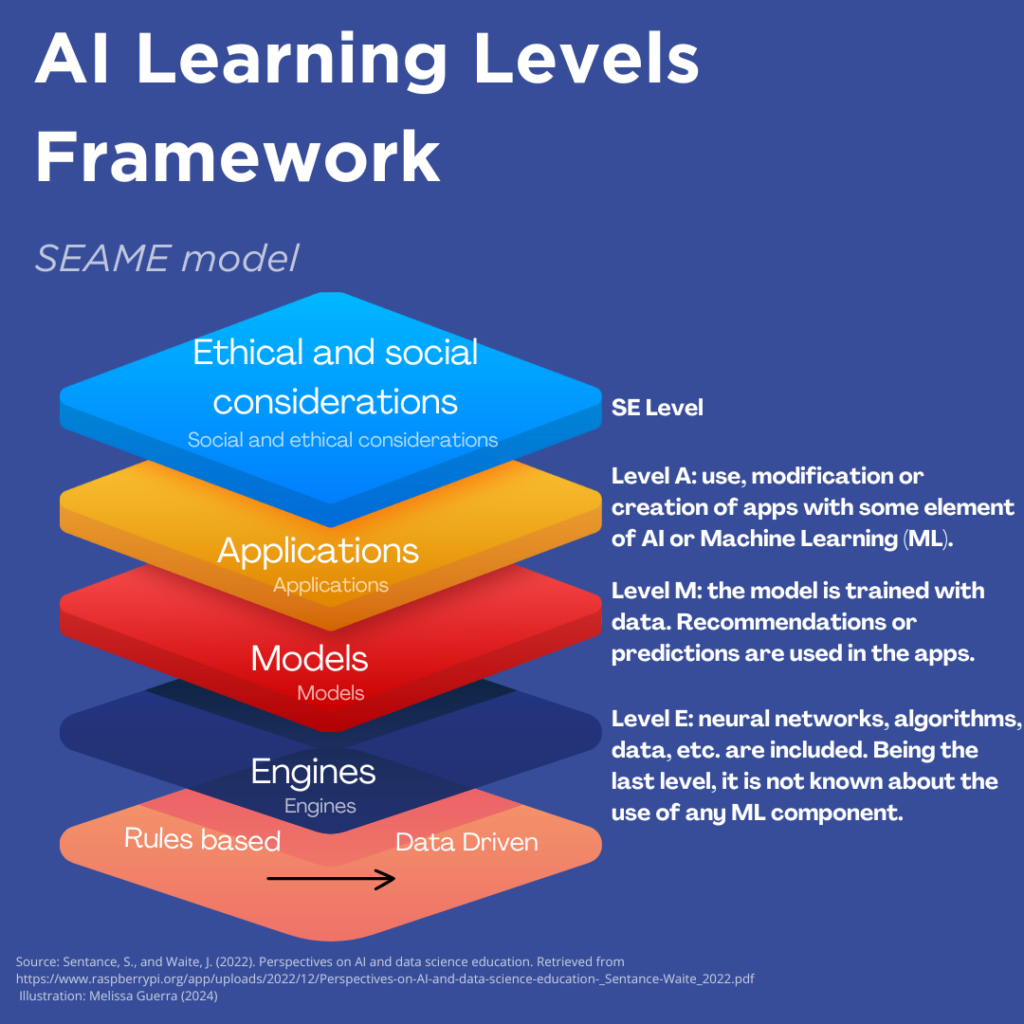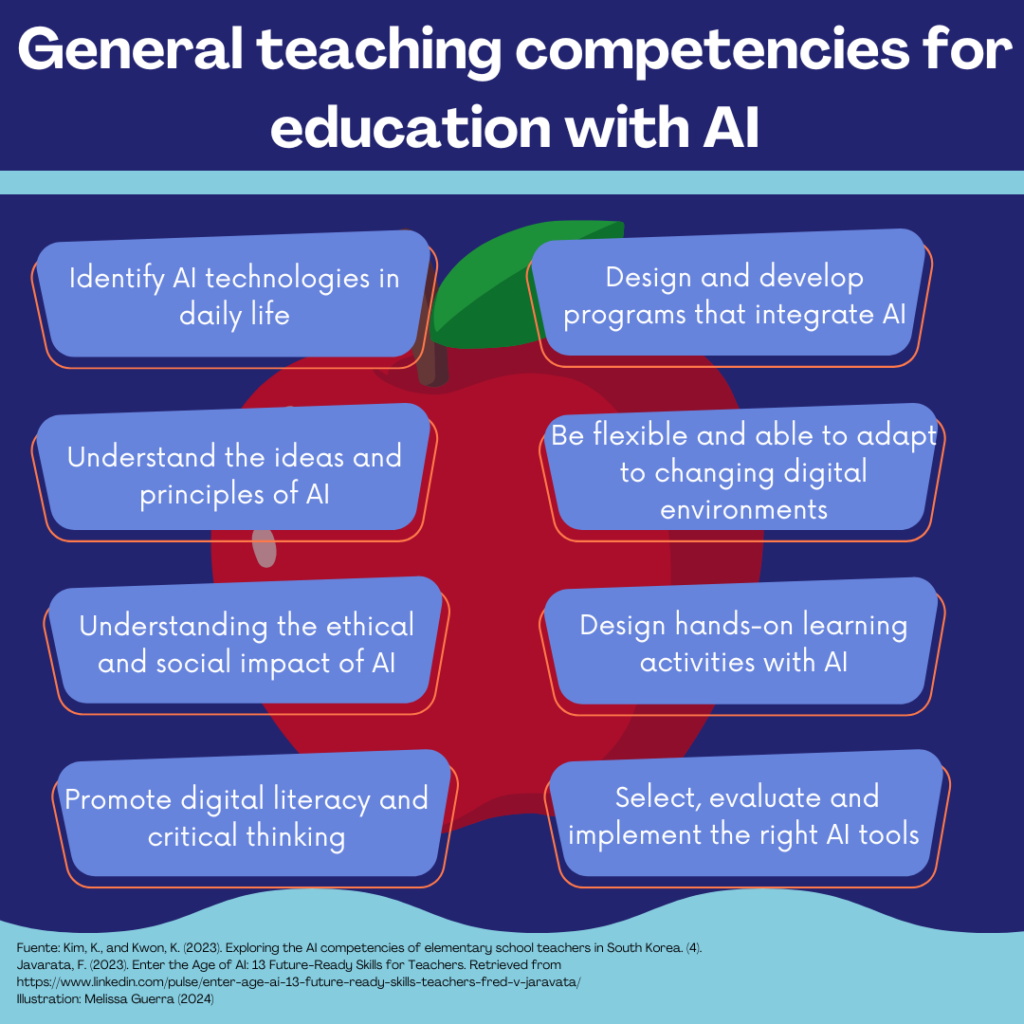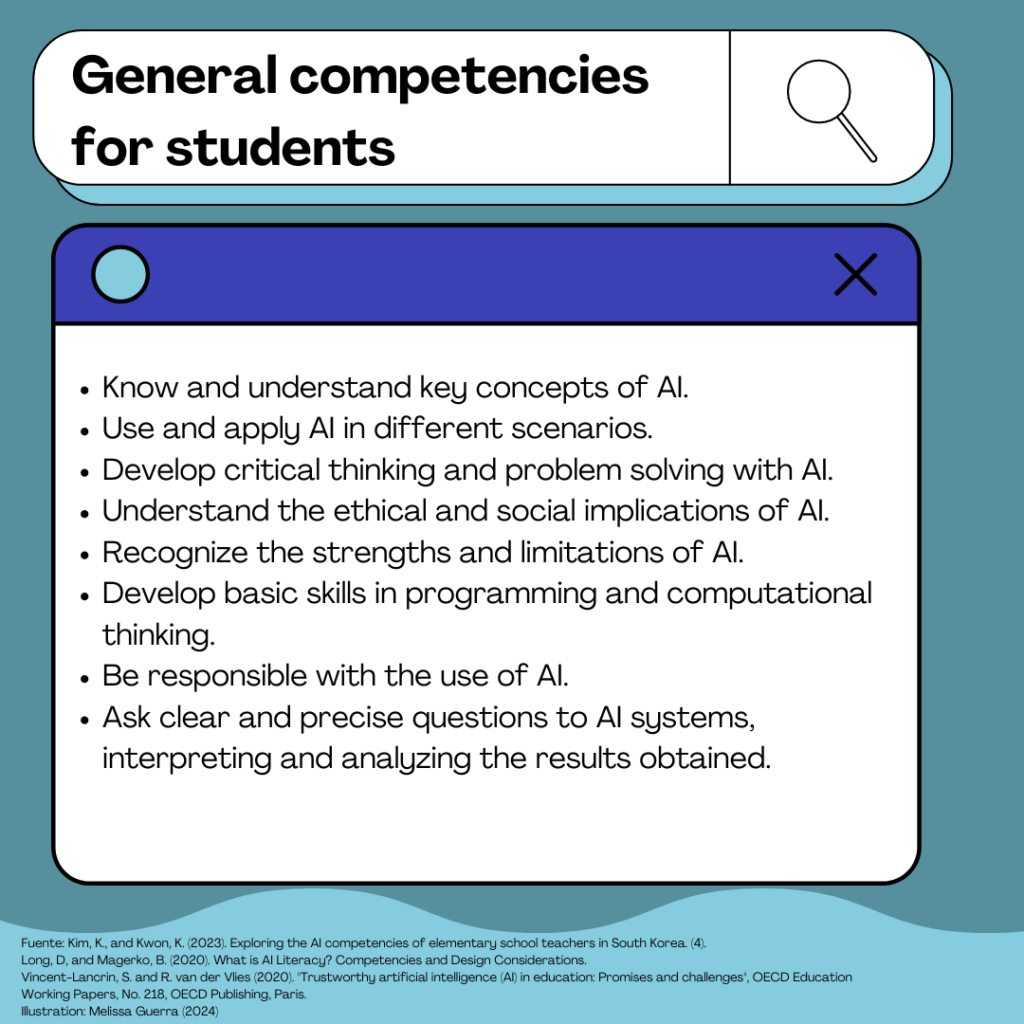It is essential to note that implementing this technology in primary education goes beyond integrating apps or platforms into classroom teaching and learning. AI has reformulated and elevated the teaching-learning processes, producing fundamental changes inside and outside the classroom, emphasizing curriculum design and digital skills.
Still, the limitations and ethical repercussions of developing and implementing AI at the primary level must be considered so that children’s human rights are not violated.
K-12 and Artificial Intelligence (AI)
Digital Literacy
One key term for understanding the role of AI in education at the primary level is digital literacy, from which another in artificial intelligence emerges (AI literacy).
According to UNESCO, digital literacy is “the ability to access, manage, understand, integrate, communicate, evaluate and create information through the safe and relevant use of digital technologies for employment, decent work, and entrepreneurship.”
AI Literacy
On the other hand, literacy/instruction in artificial intelligence (AI literacy) is defined as the ability to interact affordably with AI by leveraging AI tools, systems, and frameworks to solve problems effectively and ethically within a wide range of socio-cultural contexts. Other studies define it as competencies that allow assessing, communicating, and collaborating effectively and critically with this technology.
In addition, they highlight that AI literacy has three essential elements:
- Understanding the capabilities of this technology.
- Its use in problem resolution.
- Its application in sociocultural contexts.
Why is AI Literacy critical?
As an ethical principle, the inclusion of AI literacy exposes the importance of educating children and young people to be informed so they can make good decisions regarding using artificial intelligence in their lives.
Some studies suggest that literacy in this technology is relevant to children because it improves many aspects of child development, such as theory of mind, inquiry, creativity and emotions, and collaborative inquiry. In addition, implementing tools with this technology in the early stages of preschool education has shown promising effects.
In addition to being end-users, children need a different educational approach due to recent technological advances. However, various studies point out that integrating AI into the curriculum has been challenging because it implies changing the way of teaching and learning. Also, there is little research on it in primary educational environments.
Several initiatives call for “taking action” in the face of the growing need for primary education to include AI literacy, involving design, pedagogical foundation, implementation (i.e., what, when, and how), assessment, objectives, competencies, teacher preparation, and updates, among others.
The Initiative, “Five Big Ideas in AI“, was proposed in the joint work of the Association for the Advancement of Artificial Intelligence (AAAI) and the Computer Science Teachers Association (CSTA), which presented recommendations for teaching this technology in primary education. The initiative defines what students should learn about AI, robotics, and machine learning (ML).

Another initiative is the SEAME model, a high-level ranking of concepts and skills to categorize AI learning resources for primary education and research.

Why teach with AI?
Several reasons account for the relevance of teaching with AI integration in primary education:
- Knowing and understanding the core competencies of this technology and using its applications is critical for all people to become AI literate in today’s digital world.
- Children should be trained to understand, use, and assess its purpose.
- Children should be able to understand its essential functions, especially when AI-integrated toys appear in their daily experiences.
- The new generations are already feeling its impact on their lives.
- Its use must be safe and effective.
- AI requires a new way of thinking.
- This technology’s opportunities can empower children to achieve or potentiate changes.
- A workforce trained in artificial intelligence is required.
How can you teach with AI?
Nowadays, there is a blurred distinction about how, when, and what to implement in educational work. The AI-integrated platforms and apps do not include the totality of the changes required to enhance academic quality at the primary level with artificial intelligence.
Several studies indicate that integrating this technology in toys, such as robots and kits (for programming) during preschool education, supports the first steps of children’s AI literacy. Other AI tools implemented in the primary education classroom are PopBots, Teachable Machine, Jobo Robot, Anki Cosmo Bot, PlushPal, RoBoHon, and PictoBlox.
Through gamification with AI (games such as “rock, paper, scissors,” playful activities, and music), students develop the necessary scaffolding to learn about knowledge-based systems, supervised machine learning, and generative AI, acquiring and recognizing basic knowledge about artificial intelligence and its ethical implications.
Instructional design integrating AI literacy requires considering pedagogy, content, tools and class materials, assessments, and so on. Although there is no set of global guidelines for developing a curriculum in this way, as each country has different educational and cultural contexts, suggestions and recommendations can be reviewed to begin building a strategic, pedagogical, and technological plan that supports educational quality per the principles and standards required for each case.
Some authors suggest guidelines for teaching AI in the classroom, focusing on science and math: K-12 AI Learning and Teaching, K-12 Integration of AI into STEM, Language Arts, and Social Science Education, K-12AI Professional Development for Teachers and Administrators, and K-12 AI Assessment.
It should be emphasized that AI literacy does not require students to tackle complex terms or topics or acquire complex programming and ML skills; instead, they need to develop solid bases for comprehending AI’s capabilities, limits, applications, and ethical considerations so they can fully develop in the digital age.
Challenges of Entry-Level Teaching
Although it may seem simple, deploying an AI-integrated curriculum is complex. We must not lose sight of the learning objectives or implement activities with apps or platforms with this technology just because we believe it would be an “innovation.”
With or without AI, instructional design, plans, lessons, and methods must have a goal. Care must be taken not to fall into a vicious circle of “infinite application of activities with artificial intelligence” without purpose in learning. AI should be considered a tool, not a substitute for something.
The most significant challenges are:
- Teachers’ AI knowledge, skills, confidence, and attitudes deficit
- The lack of a robust and integrated AI curriculum
- There is little information about the guidelines for implementing the appropriate teaching-learning processes with AI
It should also be emphasized that teachers and the student community must develop skills relevant to today’s digital world, which makes the challenges increasingly tricky.
Teacher Competencies
The image below displays some of the competencies that teachers should consider:

Students Competencies
Several frames of reference distinguish specific competencies that children must develop:

Noteworthy specific competencies include data interpretation, understanding the operation and applications of machine learning, and distinguishing between general AI and narrow AI.
Technical literacy is more relevant than ever as the new generations enter a vastly different labor market due to artificial intelligence. Children are growing up in highly technological environments using apps with AI integrations, so we must consider the impact these have on them, including the negative implications of misinformation and excessive information, the use of their data (being minors), and age-inappropriate suggestions (for example, from chatbots or similar applications).
Likewise, the well-being of teachers must be considered due to the lack of procedures or guidelines on AI, their lack of confidence due to deficient digital skills, and the absence or paltry development of a robust and integrated curriculum. These can harm rather than enhance the quality of education, resulting in endless teacher burnout due to disorganization or failure to plan by the upper echelons of education.
Translation by Daniel Wetta
This article from Observatory of the Institute for the Future of Education may be shared under the terms of the license CC BY-NC-SA 4.0 
)
)


)